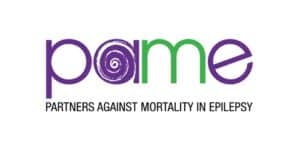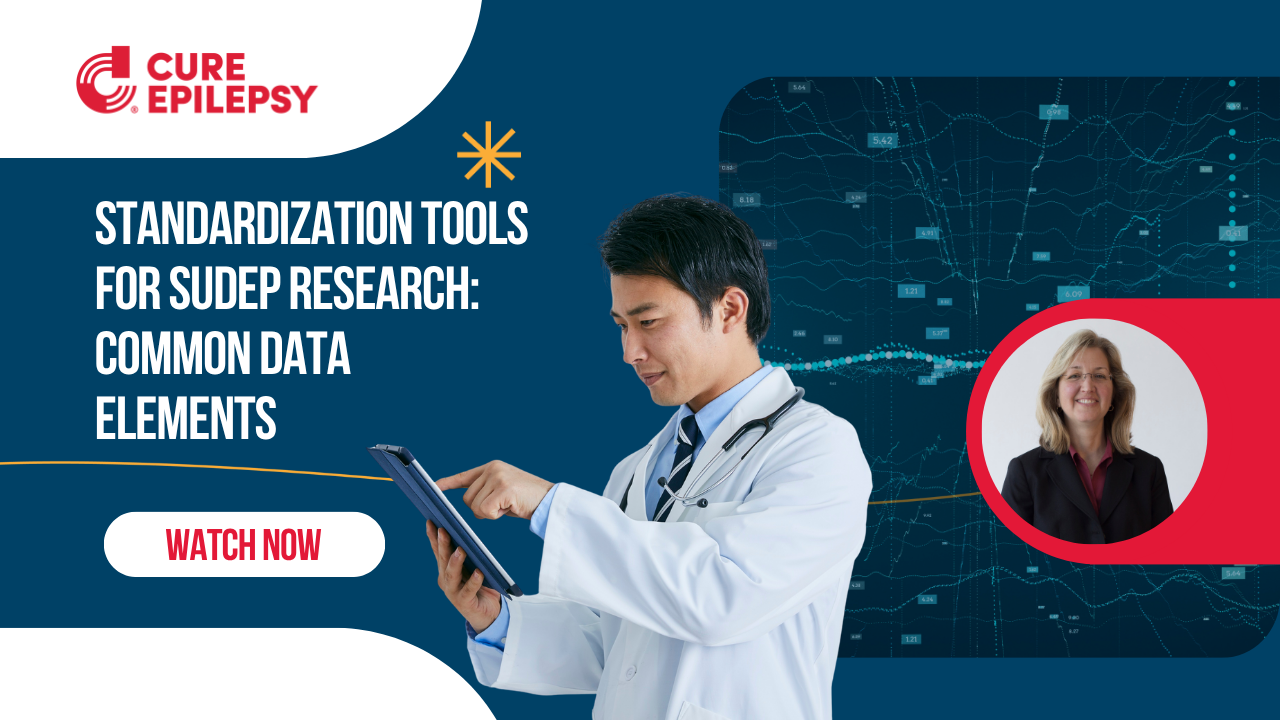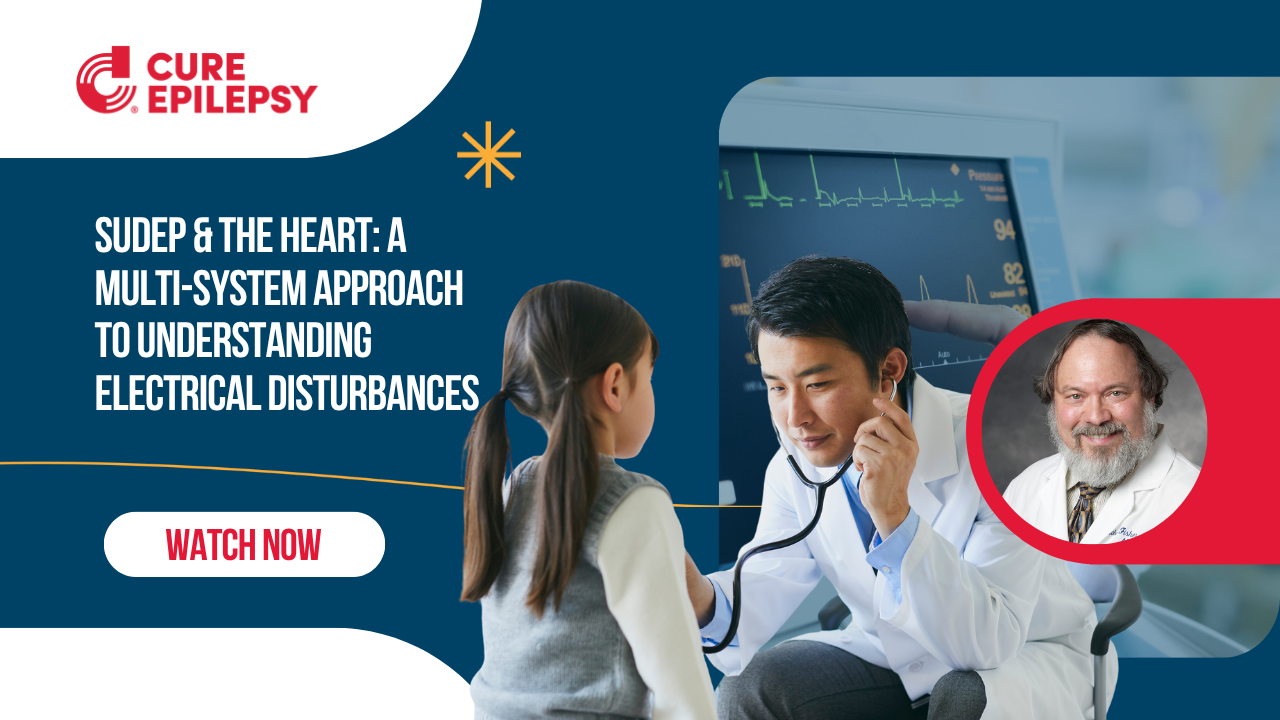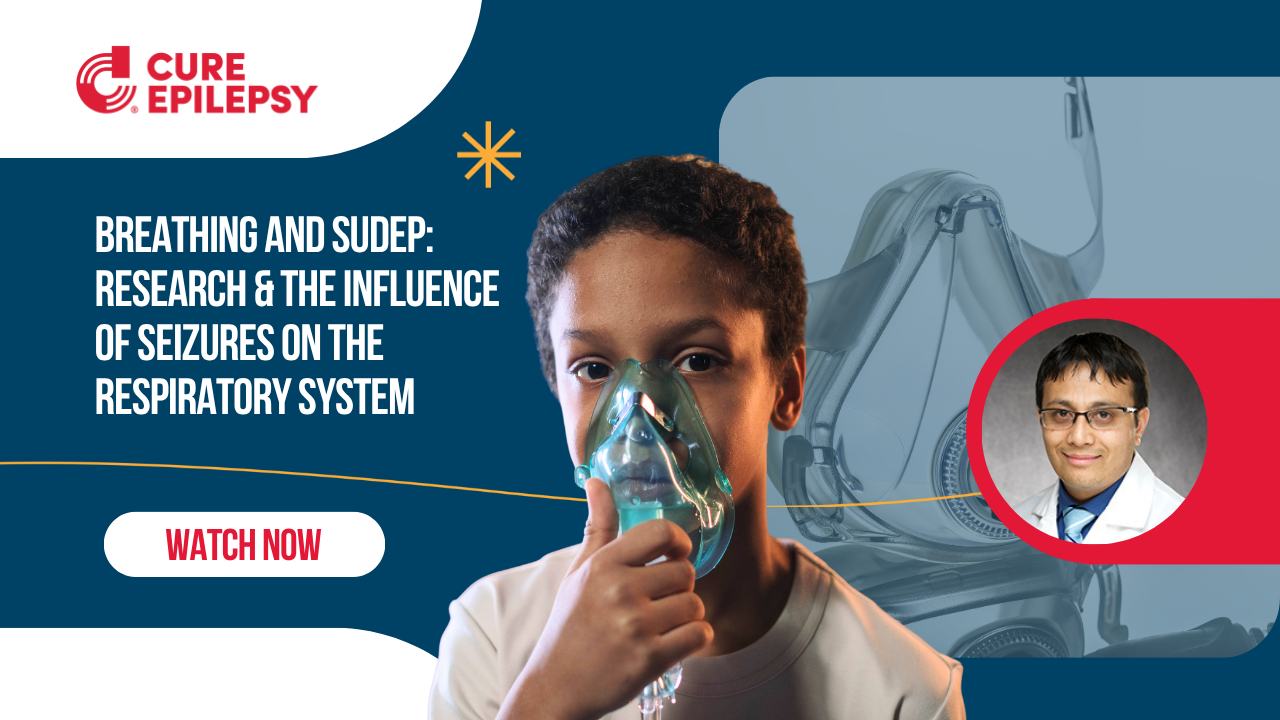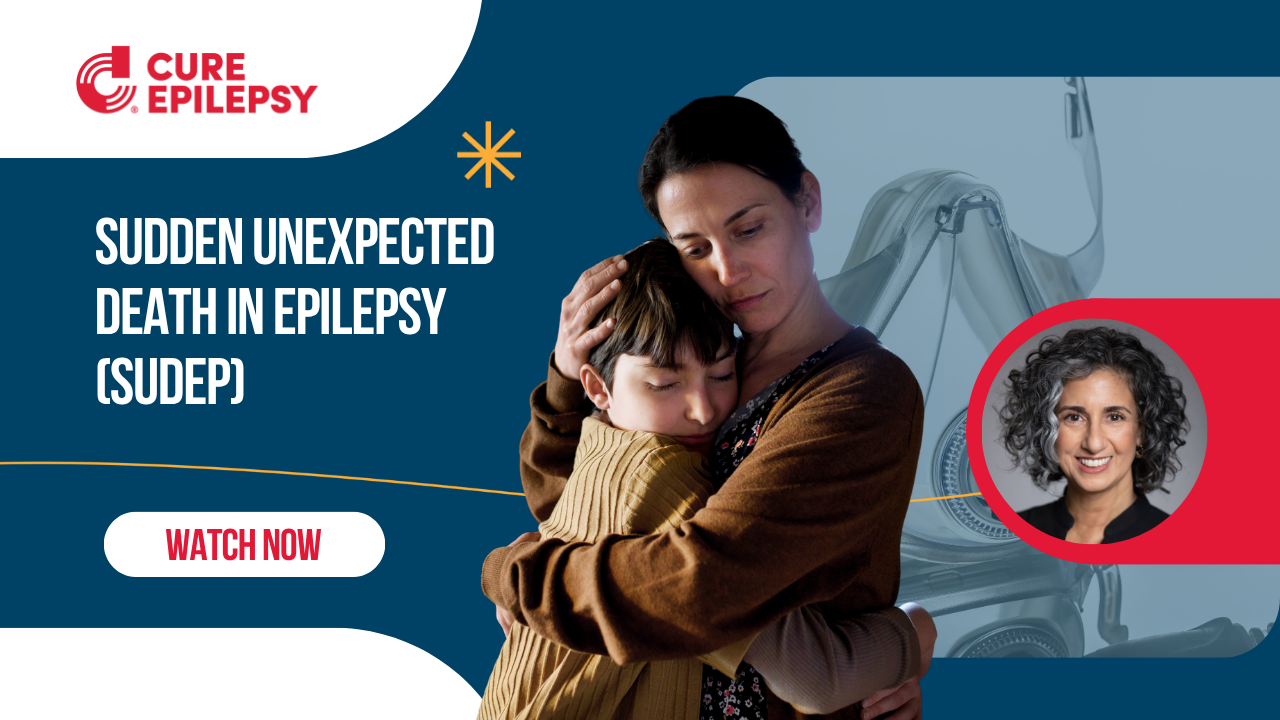What is Sudden Unexpected Death in Epilepsy (SUDEP)?
Sudden Unexpected Death in Epilepsy (SUDEP) affects approximately 1 in 1,000 people with epilepsy, regardless of age 1,2. While lack of seizure control and seizure severity are the most common concerns for increased risk of SUDEP, there is also a concern that certain genetic mutations may increase SUDEP risk.
Latest Sudden Unexpected Death in Epilepsy (SUDEP) Research
This webinar will discuss what we know about SUDEP, specifically in the rare epilepsy community, as well as what parents and caregivers of children with rare epilepsies should know about SUDEP prevention and ways to mitigate risk. Presenters will share ideas on how to discuss SUDEP with doctors, from both the perspective of a physician and a parent of a child diagnosed with a rare genetic epilepsy who has educated themselves about SUDEP and taken steps to reduce the risk of SUDEP for their child. Attendees will have the opportunity to ask questions to all presenters. The webinar will also include a discussion about the latest advancements in basic and clinical epilepsy research focused on SUDEP risk and prevention.
The webinar is intended for people living with epilepsy, their family members and caregivers, and anyone seeking to learn more about mental health and epilepsy.
This webinar is conducted in partnership with our friends at PAME and Wishes for Elliott.
The mission of Partners Against Mortality in Epilepsy (PAME) is to convene, educate and inspire all stakeholders – from the bereaved to those living with epilepsy, to health care professionals, advocates, clinical and basic scientists, and death investigators – to promote understanding and drive prevention of epilepsy-related mortality.
Wishes for Elliott is a non-profit organization dedicated to supporting research to improve the lives and prognosis of children struggling with SCN8A mutations and similar rare epilepsies. Their collaborative DEE-P Connections project partners with more than 40 rare epilepsy groups to help educate and bring critical resources to families who have children severely affected by these disorders.
1 Sveinsson O, Andersson T, Carlsson S, Tomson T. The incidence of SUDEP: A nationwide population-based cohort study. Neurology. 2017 Jul11;89(2):170-177.
2 Keller AE, Whitney R, Li SA, Pollanen MS, Donner EJ. Incidence of sudden unexpected death in epilepsy in children is similar to adults. Neurology. 2018 Jul 10;91(2):e107-e111.
Q&A Transcript
How did you find out about SUDEP?
I’ll tell you just now is what I’ve learned about SUDEP was right here on this call with you. I didn’t think it applied to us. It wasn’t until my son’s third birthday when another one of our little buddies in our group, Emma, passed away in her sleep. She had a seizure, and they found her, I think, with her head in the pillow, and it was devastating. It was that point on that my husband and I started monitoring Lincoln, and we had a hospital grade monitor. We hooked him up every night. It used to be that we would only monitor his breathing when he was sick, when we knew that he was compromised, but from that night on, we have put Lincoln on his stat monitor every single night.
I didn’t even know that it was because of SUDEP, still. I wasn’t associating that with Emma’s passing or anything like that. We just knew we needed to monitor him. It’s not a conversation that we had with our doctors. Honestly, I thought that Lincoln has lived through so many thousands of seizures that one couldn’t possibly be the one to take him out, for lack of better terminology. I think I thought that was a non-issue. Like, “No, he’s just had lots of seizures, and he’s okay. He comes out of them.”
I’m realizing now, thanks to the doctor’s presentation, that Lincoln fits all those boxes, and we’re not going to have seizure freedom. We’re going to keep working for it, but he is very high risk. I’m comforted knowing that we’re doing what we can, and I even have questions for the doctor myself. We happened upon a solution. We can’t prevent it, but monitoring Lincoln and keeping him in our room is something that we’re comfortable with in doing what we can
Can you comment on successful ways that parents have brought this issue to your attention. I know you’re very attuned to all of this, but what recommendations do you have for parents who want to talk about this and don’t know how to bring it up?
I think the way in which patients have proactively asked me, it’s often me discussing SUDEP with patients and their carers, but every once in a while a proactive parent or a proactive carer or a patient himself or herself will bring this up to me. It’s a very direct and inoffensive question, which is, “What is the risk of something bad happening to me?” It’s a straightforward question that deserves a straightforward answer.
Most of us who have observed a grand mal seizure to occur will know that a lot of the time patients do turn a little blue around the lips and don’t breathe very well after a seizure. What does that mean to that individual? I think it’s a very important question to be asked and to be addressed. A lot of the time is the answer is reassuring. Sometimes it is okay. These are the specific things that need to look out for, and this is how you can be careful.
What do you recommend for children and teens who want to sleep alone? Is there a specific type of monitoring device, either that they wear or that is connected to the bed, that’s helpful?
That’s a very, very important question. I think there was a time when we were very careful about making overbearing recommendations because teenagers in particular have to live their lives. There’s a quality of life issue, et cetera, et cetera. But we know from recent scientific studies that one of the most powerful factors that prevents death probably is the presence of somebody else in the room; whether somebody else is in the room sleeping with that particular individual or not. There’s something to be said about that kind of observation.
Of course, as you’ve already alluded to, there’s the in between of monitoring devices and a lot of my patients do use them successfully. There are a couple of FDA approved devices that are out there on the market. I personally don’t have shares in either, but there is the Empatica, the Embrace device. There’s Brain Sentinel. They both use different approaches. What they don’t do is prevent SUDEP. What they do, do is let the designated carer or person know that a seizure is occurring or has occurred. I’m an advocate for the use of whatever technology is available for mitigating risk.
Have there been any studies with SUDEP and VNS patients? If so, are there any differences in the rate of SUDEP?
Yes. Great question. There is actually a very well-known study where several thousand patients who had had VNS devices implanted were studied over a period of time. It looked as though the rate of SUDEP over a prolonged period of time actually went down in the VNS population. Over a long period of time, it may be protective against SUDEP.
This is obviously one study, but it was sufficiently powered, I think, because there were thousands of patients who were studied to say that there is probably something there. When you couple that with the fact that VNS in some individuals reduces seizure frequency, then there’s a case to be made for doing VNS in patients who have not responded to other measures. [But] I wouldn’t say that VNS alone is completely protective.
Can a CPAP or other oxygenation aid device help those with SUDEP risk factors at night during sleep?
That’s a pretty nuanced question, I have to say. When it comes to improving sleep quality in patients with epilepsy, yes, absolutely. CPAP and those things might be useful because sleep deprivation, poor sleep quality, et cetera, et cetera. These are all linked to seizure frequency, and of course, seizure frequency is linked to SUDEP.
In somebody who’s having a seizure and may be likely to suffer from SUDEP, would CPAP prevent that? Probably not, and I say that for number reasons. Chief among those being that, in a convulsive seizure, you can have all monitoring devices, they become dislodged, there’s a lot of movement, shaking, et cetera, et cetera. So I wouldn’t rely on CPAP for preventing SUDEP directly like that.
Should electrical stimulation of the medulla (and maybe you can explain where the medulla is) be more widely used to study or to prevent SUDEP?
The medulla is part of the brain stem, the same structure that I was talking about, and medulla probably is the most important part of the brain stem for a final common pathway to controlling breathing and cardiac rhythm and blood pressure. A very important structure. It’s a very challenging part of the brain to study in humans because to stimulate the medulla, you have to put electrode into the brain stem, and that always carries a risk of bleeding hemorrhage and so forth. The outcome of bleeding in that part of the brain stem would be catastrophic, would be death. To my knowledge, nobody has done that in humans yet, but there are researchers who are looking at stimulating other parts of the brain stem; parts of the brain stem that are maybe less risky, but at the same time, likely to impact breathing and cardiac function. There’s more to come. In the next few years, I think we will hear a lot more about brain stem stimulation
For uncontrolled seizure patients, how often would you recommend doing an EMU stay? I know that the MORTEMUS study was done using patients in the EMU.
The EMU has a very specific role. We either send patients there for diagnostic assessment. Here, we’re trying to figure out if the patient has epilepsy or a related disorder. Or, we’re trying to see what kind of epilepsy it is. That’s diagnostic EMU assessment.
Then there’s the other kind of EMU assessment, which is the presurgical assessment; studying the seizure in order to do brain surgery. It’s the latter type in which we’ve become more and more practiced at assessing cardiac and breathing function, as well. There isn’t much point in repeated EMU assessments for assessing risk. Usually, if intractability or lack of control through medication surgery has been established, then one EMU assessment where cardiac and breathing function are looked at as well is probably enough.
Here’s a question related to the rare epilepsy categorization. “Is Lennox-Gastaut a part of this group of rare epilepsies that are impacted more significantly by SUDEP?
Yes. I would say that it is. It’s one of the commoner varieties of the rare epilepsies, but Lennox-Gastaut really is a syndrome. It’s not really one specific genetic condition. Within the Lennox-Gastaut rubric, we actually have dozens of other conditions that make up the syndrome complex that we call Lennox-Gastaut.
You’ve talked a lot about people who may have had long-term epilepsy, lots of seizures, but there are instances where after just a handful of seizures, somebody has passed due to SUDEP. We think of some more public cases like Cameron Boyce who passed away, but there are others. Is it possible to die from SUDEP without either a diagnosis of epilepsy or a first tonic clonic seizure?
Absolutely, yes. Happily, I would say that that kind of situation where it’s not uncontrolled epilepsy is extremely rare, but it does happen. As recently as two months ago, I was contacted by colleagues in another part of the country who had just such a patient who passed after a second tonic clonic seizure. We’ve come to understand that SUDEP is actually a heterogeneous phenomenon. It’s not just one thing, and there isn’t just one prototype patient that fits that mold. There’s actually a variety of types. There are tragic cases where a first ever or a second ever seizure kills, but I have to say that that is very, very rare.
You’ve talked about the cardiac disturbances, but could you talk a little bit more about that? Does that mean cardiac arrest, or what do you mean by a cardiac disturbance or arrhythmia?
By cardiac disturbance I mean cardiac rhythm dysfunction. Cardiac rhythm can be disturbed in a variety of ways during seizures. The heart can either be too fast or too slow. When it’s too fast, it can happen in a pathological fashion; conditions that we refer to as ventricular tachycardia, ventricular fibrillation, and things like that. Those are very dangerous. In the SUDEP context that seems to happen extremely, extremely rarely. What is more common is the heart beating too slow and maybe even stopping. That’s what we refer to as bradycardia and asystole. You can imagine that after a seizure, if a patient is not breathing too well and their heart’s not beating too fast either, that their blood pressure’s not going to be great. Of course, it sets a vicious spiral that can result in an unfortunate outcome
Abby, I know that you had some questions. Now that you’ve heard this discussion, as a parent, what do you think and what sorts of questions would you be coming to your physician with now?
Abby: First off, I’m like, “Wow! It’s a miracle my son is still here!” We have prolonged QTC. He has intractable epilepsy. He’s a boy. He has cluster seizures. I’m thanking God that he’s still here.
I feel like quite a few of the questions coming in were kind of along the lines of what I was thinking. My son has a VNS, so I was worried that might be a problem.
Somebody asked about the CPAP, that’s something that I have chosen not to put on my son, but I’m wondering if I should? I’m wondering if that makes a difference breathing-wise.
My question would be the sleep studies that my son had done seem like they’re separate from EKGs, like these are two different events. I’m wondering, do I need to pursue having them done together? I’m not even quite sure what my question is. It just seems that the breathing patterns that you’re looking for are maybe things my neurologist isn’t looking at. Is my neurologist looking at that, or my epileptologist, or are they just looking at seizure activity? Are they focused in on breathing patterns? How do I know if my son’s intractable epilepsy is causing breathing issues not related to just, “Oh, his SATs dropped”?
I don’t know if that was very clear cut, but that’s kind of where I’m going. How do we get everybody together on the same page to talk about this risk?
Dr. Lhatoo: If I may just make a comment, which is, I shared some of the recent research findings with you folks today, and it is always the case that clinical practice lags a little behind what comes out in research. That’s only correct because research findings need to be validated, replicated, reproduced, and so forth before they become standard clinical practice. It is not standard clinical practice in many places to routinely measure breathing. Cardiac rhythm is done. EKG is done in most places, but breathing is not routine. I believe that it should, and there are a group of us who are strong advocates for it. Over the coming months and years, you’ll see more and more folks who will begin to do it in their epilepsy monitor units. But in sleep studies, breathing is very carefully measured, so I would imagine that your child has had that done.
The questions below were answered by Dr. Lhatoo after the webinar had finished recording to answer some of the remaining questions submitted by attendees:
Why does the risk of SUDEP increase in people with nocturnal epilepsy or people who have seizures during sleep? What makes sleep or being isolated throughout the night a risk factor? Is there any recent research you could share?
Sleep onset seizures (particularly REM sleep) seem to cause more problems in animal models of SUDEP. Sleep phases may also be associated with more tendency to autonomic dysfunction [the autonomic nervous system is what controls and regulates involuntary physiologic presses such as heart rate, blood pressure, breathing, and digestion; I believe Dr. Lhatoo is saying during sleep, these processes slow down which can increase seizure severity] and post-seizure obtundation [reduced level of consciousness after a seizure]. In some people, getting tangled up in bedclothes face down may impair recovery fatally.
What are the most promising biomarkers to identify patients at SUDEP risk, and how do we implement these into clinical care (other than the biomarkers you discussed in the webinar—eg. genetic biomarkers)?
So far, there are no biomarkers that have been proven to be useful in systematic prospective studies [a study that focuses on the development of a disease and relates it to suspected risk or protection factors; usually involves watching subjects for a long period of time], but there are several for which there is some evidence of value. These include generalized convulsive seizure frequency and post convulsive [after a convulsive seizure] bradycardia/asystole [slow heartbeat/heart stops pumping entirely due to the electrical system failing] and central apnea [breathing repeatedly stops and starts because the brain doesn’t send proper signals to the muscles that control breathing]. The best way to identify these is an epilepsy monitoring unit assessment. There are several candidate genetic biomarkers but again, none with clinical utility yet.
Does SUDEP originate from specific lobes or areas of the brain (apart from the brain stem and uncontrolled epilepsy as mentioned in the webinar)? Do we know the percentage of SUDEP victims who suffered from seizures originating in these specific lobes?
There is reasonable evidence now to say that SUDEP can occur whether the seizures are of focal (any lobe) or of generalized onset, if seizures are uncontrolled.
Is the risk of SUDEP the same if a patient experiences ictal/postictal tachycardia instead of bradycardia during seizures? I understand that any cardiac arrhythmia is a risk factor for SUDEP but multiple review papers and studies have conflicting information about what type of arrhythmia is the most dangerous—could you please help clarify this?
Post-ictal bradycardia [slow heartbeat after a seizure] is likely more dangerous than tachycardia [rapid/increased heartbeat]. This is because postictal tachycardia is extremely common; the vast majority of patients who have this feature have no problems.
The information contained herein is provided for general information only and does not offer medical advice or recommendations. Individuals should not rely on this information as a substitute for consultations with qualified healthcare professionals who are familiar with individual medical conditions and needs. CURE Epilepsy strongly recommends that care and treatment decisions related to epilepsy and any other medical condition be made in consultation with a patient’s physician or other qualified healthcare professionals who are familiar with the individual’s specific health situation.






